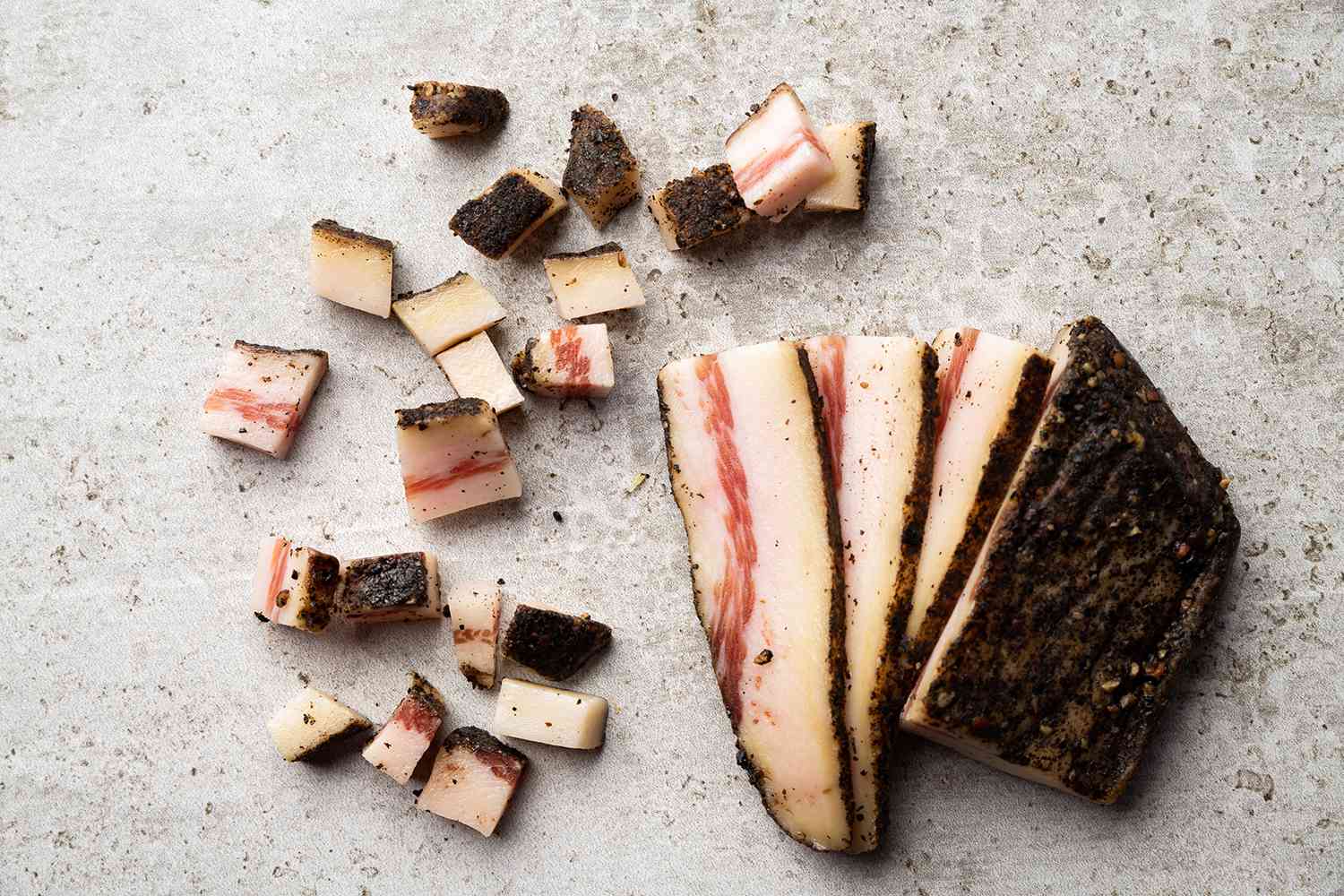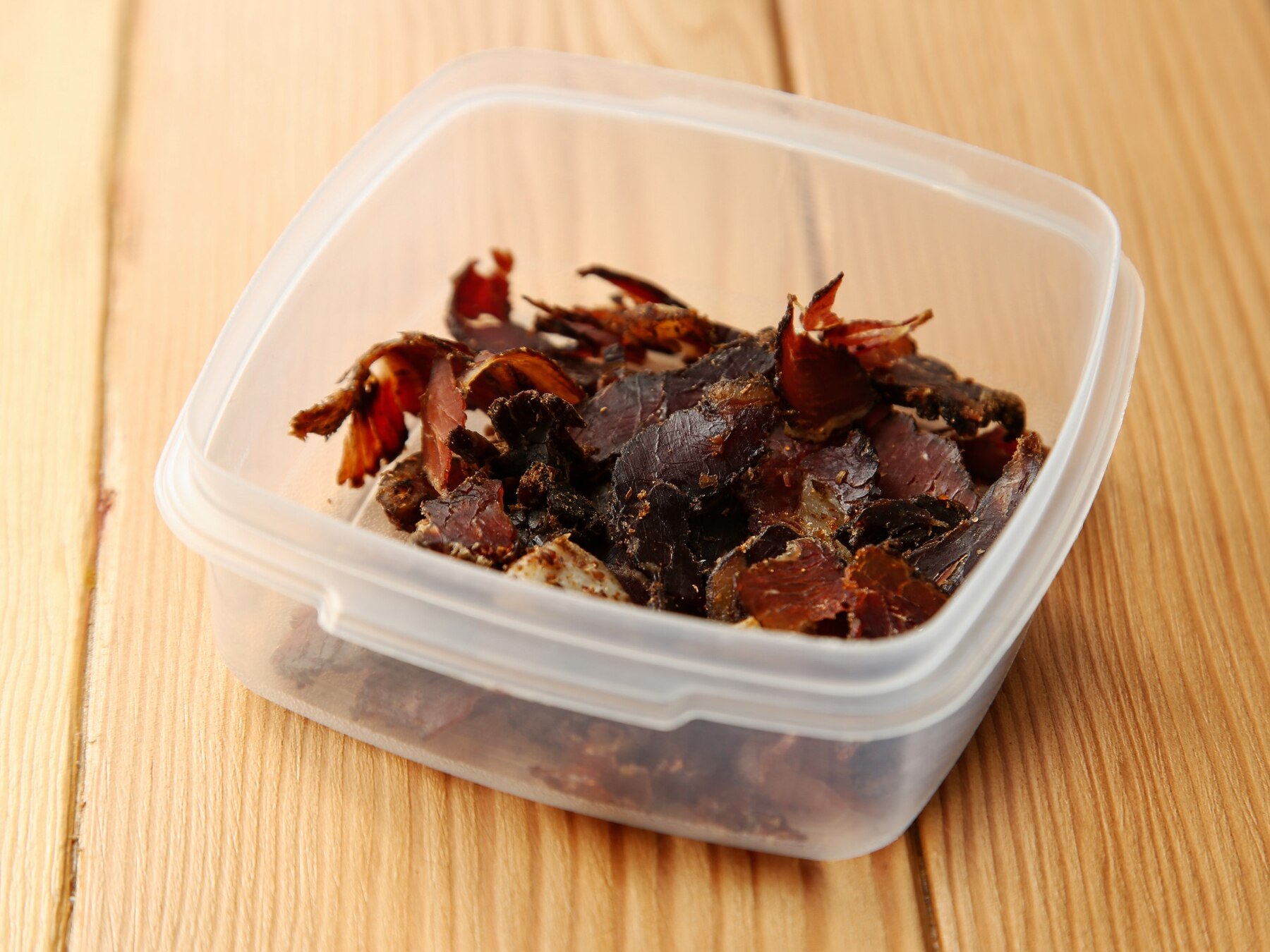

Articles
How To Store Guanciale
Modified: December 7, 2023
Looking for articles on how to store guanciale? Find useful tips and techniques for preserving the flavors and quality of this delicious Italian cured meat.
(Many of the links in this article redirect to a specific reviewed product. Your purchase of these products through affiliate links helps to generate commission for Storables.com, at no extra cost. Learn more)
Introduction
Guanciale is a delicious Italian cured meat made from the pork jowl or cheek. It is a key ingredient in many traditional Italian dishes, such as Carbonara and Amatriciana. The rich and savory flavor of guanciale is highly prized and it’s no wonder that many people want to keep a good stock of it on hand.
Storing guanciale properly is crucial to preserve its flavor and prevent spoilage. Whether you have just bought a fresh piece of guanciale or have leftover portions that you want to store, this article will guide you on the best ways to store guanciale to ensure it stays flavorful and safe to eat.
Key Takeaways:
- Properly storing guanciale is crucial for preserving its rich flavor and ensuring safety. Whether at room temperature, in the refrigerator, or the freezer, following the right methods can prolong its shelf life and enhance your Italian dishes.
- Opt for fresh, high-quality guanciale, and prepare it for storage by trimming and portioning. Whether hanging at room temperature, refrigerating, or freezing, proper handling and packaging are key to enjoying this delicious Italian cured meat for longer periods.
Read more: How To Store Store-Bought Bread
Choosing the Right Guanciale
When it comes to storing guanciale, it’s important to start with the right quality of meat. Here are a few tips for choosing the right guanciale:
- Freshness: Look for guanciale that is fresh and has a bright color. Avoid any guanciale that appears discolored or has a strong odor, as these may be signs of spoilage.
- Quality: Opt for guanciale from reputable sources or butchers who follow good food handling practices. This will ensure that the guanciale is of high quality and safe to consume.
- Thickness: Consider the thickness of the guanciale slices before purchasing. Thicker slices may take longer to cure and may require different storage methods compared to thinner slices.
By selecting the right guanciale, you can ensure a better overall storage experience and enjoy the best flavors when you’re ready to use it in your favorite dishes.
Preparing for Storage
Before storing guanciale, it’s essential to prepare it properly to ensure maximum longevity and freshness. Here are some steps to follow:
- Trimming: Start by trimming any excess fat or rind from the guanciale. This will help prevent the growth of molds and extend its shelf life.
- Cut into Portions: Depending on your usage and storage needs, you can choose to cut the guanciale into smaller portions or leave it as a whole piece. Cutting it into smaller portions can make it easier to use and prevent unnecessary wastage.
- Wrap in Parchment Paper: Place each portion of guanciale in a piece of parchment paper and wrap it tightly. This will protect the meat from drying out and prevent any potential flavors from transferring to other foods in the storage area.
- Label and Date: To help keep track of the freshness of the guanciale, label each package with the date of storage. This way, you can easily identify the oldest pieces and use them first.
By taking these simple steps in preparing the guanciale for storage, you can ensure that it stays in optimal condition and is ready to be used whenever you’re in the mood for a delicious Italian dish.
Storing Guanciale at Room Temperature
Storing guanciale at room temperature is a traditional method that enhances the flavor and texture of the meat. However, it’s important to follow specific guidelines to ensure safety and prevent spoilage. Here’s how to store guanciale at room temperature:
- Cool and Dry Environment: Find a cool and dry area in your kitchen or pantry to store the guanciale. The ideal temperature range is between 54-68°F (12-20°C).
- Hanging Method: One traditional way to store guanciale is by hanging it. Use butcher’s twine or a string to tie the guanciale and hang it from a ceiling hook or rack. This allows air circulation around the meat, aiding in the curing process.
- Keep Away from Sunlight: Ensure that the guanciale is stored away from direct sunlight, as exposure to light can affect the flavor and quality of the meat.
- Regular Inspection: Check on the guanciale regularly to ensure there are no signs of mold or spoilage. If you notice any mold growth or an off smell, it’s best to discard the guanciale to prevent any potential health risks.
It’s important to note that storing guanciale at room temperature carries a higher risk of spoilage compared to storing it in the refrigerator or freezer. Therefore, it’s recommended to consume room temperature-stored guanciale within a few weeks to ensure quality and safety.
Storing Guanciale in the Refrigerator
If you prefer a longer storage timeframe and want to ensure the safety of your guanciale, storing it in the refrigerator is a reliable option. Here’s how to store guanciale in the refrigerator:
- Proper Packaging: Place the guanciale portions in airtight containers or sealable plastic bags. This prevents exposure to air, moisture, and other odors in the refrigerator that could affect the flavor and quality of the meat.
- Assign a Specific Area: Designate a specific area in your refrigerator for storing guanciale to minimize cross-contamination. It’s advisable to keep it in the coldest part of the refrigerator, usually the back or bottom shelf.
- Temperature: Set the temperature of your refrigerator between 32-40°F (0-4°C) to maintain optimal freshness and prevent bacterial growth. Avoid placing the guanciale near the freezer vents as it may cause freezing and affect the texture of the meat.
- Regular Rotation: For longer storage periods, it’s important to rotate the guanciale regularly. Use the first-in, first-out (FIFO) method, ensuring that older pieces are used before newer ones to maintain freshness.
Storing guanciale in the refrigerator significantly extends its shelf life, allowing you to enjoy the meat over an extended period. However, it’s still essential to monitor the guanciale for any signs of spoilage and discard it if necessary.
Store guanciale in the refrigerator wrapped in parchment paper or in an airtight container. It can also be frozen for longer storage, just make sure to wrap it tightly to prevent freezer burn.
Read more: How To Store Basil From Grocery Store
Storing Guanciale in the Freezer
If you want to store guanciale for an extended period, the freezer is your best bet. Freezing guanciale helps preserve its flavor and texture, allowing you to have a stock of this delicious ingredient whenever you need it. Here’s how to store guanciale in the freezer:
- Preparation: Wrap each portion of guanciale tightly in plastic wrap or place them in freezer bags. Ensure all the air is removed from the packaging to prevent freezer burn.
- Label and Date: It’s crucial to label each package with the date of freezing. This helps you keep track of the storage time and use the older guanciale first.
- Freezing Timeframe: Guanciale can be stored in the freezer for up to 3 months while maintaining its quality. However, for longer storage, consider vacuum-sealing the guanciale to prevent freezer burn and extend its shelf life.
- Storage Location: Place the packaged guanciale in the coldest part of your freezer, such as the back or the bottom shelf. Avoid storing it near the freezer door, as it is more prone to temperature fluctuations.
When you’re ready to use the frozen guanciale, remove the desired portion from the freezer and thaw it properly before cooking. Avoid refreezing thawed guanciale to maintain its quality.
By freezing guanciale, you can enjoy its delightful taste and characteristics for an extended period, ensuring you always have this versatile ingredient on hand.
Properly Thawing Frozen Guanciale
When it’s time to use your frozen guanciale, it’s essential to thaw it properly to maintain its texture and flavor. Here’s the recommended method for thawing frozen guanciale:
- Refrigerator Thawing: The best way to thaw guanciale is by transferring it from the freezer to the refrigerator. Place the packaged guanciale on a plate or tray to catch any liquid that may accumulate during the thawing process. Allow it to thaw slowly in the refrigerator for about 24 hours or until completely thawed.
- Cold Water Bath: If you need to thaw guanciale quickly, you can use the cold water bath method. Ensure the guanciale is securely wrapped in a waterproof bag or sealed in airtight packaging. Submerge the package in a bowl or sink filled with cold water. Change the water every 30 minutes to ensure it stays cold. Thawing time may vary, but this method typically takes 1-2 hours.
- Avoiding Room Temperature Thawing: It’s important to avoid thawing guanciale at room temperature or using the microwave, as these methods can lead to uneven thawing, bacterial growth, and a loss of quality.
After thawing, use the guanciale promptly, as it should not be refrozen. Cook it according to your recipe and savor the delicious flavors that guanciale brings to your dishes.
Remember, proper thawing ensures that your guanciale retains its optimal texture and flavor, allowing you to enjoy the full experience of this mouthwatering Italian cured meat.
Tips for Prolonging Guanciale Shelf Life
Guanciale is a delicacy that deserves to be enjoyed at its best for as long as possible. Here are some helpful tips for prolonging the shelf life of your guanciale:
- Proper Storage: Whether you choose to store guanciale at room temperature, in the refrigerator, or the freezer, ensure that it is properly packaged to prevent exposure to air and moisture. This helps maintain its freshness and flavor.
- Regular Inspections: Regularly check on your stored guanciale to ensure there are no signs of spoilage. Discard any pieces that show mold growth, off smells, or any other signs of deterioration.
- Keep Moisture at Bay: Moisture can lead to spoilage, so it’s important to keep guanciale away from areas of high humidity. If storing in the refrigerator, make sure it is well sealed to prevent moisture absorption.
- Proper Handling: When using guanciale, make sure to handle it with clean hands and utensils to avoid introducing any contaminants that could accelerate spoilage.
- Portion Control: Cut guanciale into smaller portions before storing, especially if you don’t plan to use it all at once. This helps minimize exposure to air and allows you to thaw only what you need, reducing waste.
- Avoid Temperature Fluctuations: Temperature fluctuations can affect the quality of guanciale. If storing in the refrigerator, avoid frequent opening and closing of the door, as it can cause temperature variations. In the freezer, make sure the temperature remains consistently cold.
- Consider Vacuum Sealing: If you have a vacuum sealer, consider vacuum sealing your guanciale before storing. This removes air and helps prevent freezer burn, extending its shelf life.
- Use Older Pieces First: When you have multiple portions of guanciale with varying storage times, be sure to use the older pieces first. This rotation ensures that no guanciale goes to waste and that you always enjoy the freshest possible meat.
By following these tips, you can prolong the shelf life of your guanciale and continue to enjoy its incredible flavors in your favorite Italian dishes.
Conclusion
Properly storing guanciale is essential to maintain its flavor, quality, and safety. Whether you choose to store it at room temperature, in the refrigerator, or the freezer, following the right methods can help prolong its shelf life and ensure it is ready to enhance your favorite Italian dishes whenever you desire.
When selecting guanciale, opt for fresh, high-quality cuts, and take the time to trim and portion it before storage. Proper packaging and labeling will help preserve its freshness and make it easier to manage in your kitchen.
Storing guanciale at room temperature provides a traditional method that enhances the flavors, while refrigeration offers longer storage periods with increased safety. Freezing guanciale is the best option for long-term storage, preserving the taste and texture for several months.
Remember to thaw guanciale properly before using it, either by refrigeration or a cold water bath. Avoid room temperature thawing and microwaving, as these methods can affect the quality of the meat.
To prolong the shelf life of your guanciale, proper storage, regular inspections, and careful handling are crucial. Consider portion control, vacuum sealing, and avoiding temperature fluctuations to further extend its freshness. Always use older guanciale first to optimize its flavor and prevent wastage.
By following these tips, you can savor the deliciousness of guanciale for longer periods, elevating your meals with its incredible taste and enhancing your culinary creations.
So go ahead and stock up on guanciale, knowing that you have the knowledge to store it properly and enjoy its deliciousness whenever you crave it.
Frequently Asked Questions about How To Store Guanciale
Was this page helpful?
At Storables.com, we guarantee accurate and reliable information. Our content, validated by Expert Board Contributors, is crafted following stringent Editorial Policies. We're committed to providing you with well-researched, expert-backed insights for all your informational needs.















0 thoughts on “How To Store Guanciale”